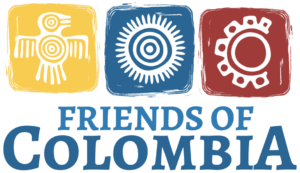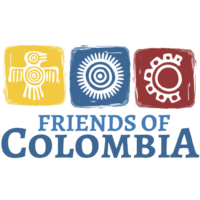By Mike Eubanks
Group VI, July 1963 – February 1965
I would like to share with you some observations from a recent months stay in Bogota and Santander. Most of what we saw represented success of what all of us worked for and hoped would result. Apart from the continued growth and development of the middle class, the campesino is sharing in the countrys prosperity. Caminos vecinales is extending paved farm to market roads deep into the countryside. Commercial quality vegetable crops and fruit are being grown everywhere. Milk for urban markets is regularly collected from even small farms. Fish farming is being rapidly developed. Tropical fruits have been widely commercialized. We found potable water and electricity everywhere.
Public schools are picking up campesinos after work, taking them to night school and then returning them to their homes by bus. Campesinos are rapidly acquiring trucks and motorcycles. Brick is replacing mud as the preferred building material.
Craft programs are well supported with a very strong design program, adapting skills to produce products that easily fit into homes beside modern furnishings. Nick-knacks are out. High quality useful furniture and decorative objects are in. Artesanias de Colombia is trying to find and record the history of its founding by USAID and Group VI.
Politically, we found walls painted with political signs for local candidates running for local offices rather than revolutionary slogans. We found strong security measures in the heart of the country, safe travel, and a police force that was friendly, outgoing and very helpful. The police have a high level of self-respect and are respected. In Bogota, the police are expanding into neighborhood service centers. There is a very active traffic police (male and female) force. There is still substantial urban crime, but it didnt seem very different from Chicago.
Bogota has taxis running on pressurized natural gas, a rapidly developing urban transit system, active bike routes and dedicated bike paths. The streets are cleaner than New York Citys.
Smog is still a major problem and there is a great multiplicity of small buses serving the outlying barrios. But as the public transportation system continues to expand, the smog spewing buses are slowly being forced off the streets.
What was most impressive was the multiplicity of new businesses and services necessary to support a rapidly modernizing country and a modern city of 7 million people. There is a very high level of satisfaction with past and present Mayors of Bogota. With the vast numbers of retail stores and services open on U. S. hours of operation, there are many great jobs available for part-time students, opening advanced education to poorer students.
We were particularly impressed with the building industry and were able to see and compare earlier construction with the latest apartments and condos. Given the state of development, the availability of excellent medical care, $150 health insurance policies, $5 for opera seats, $2 for afternoon concerts, mountain streams filled with rainbow trout, and home ownership at 30% of U. S. costs, I am planning to move with my wife to the Bogota area in the Spring of 2009.



